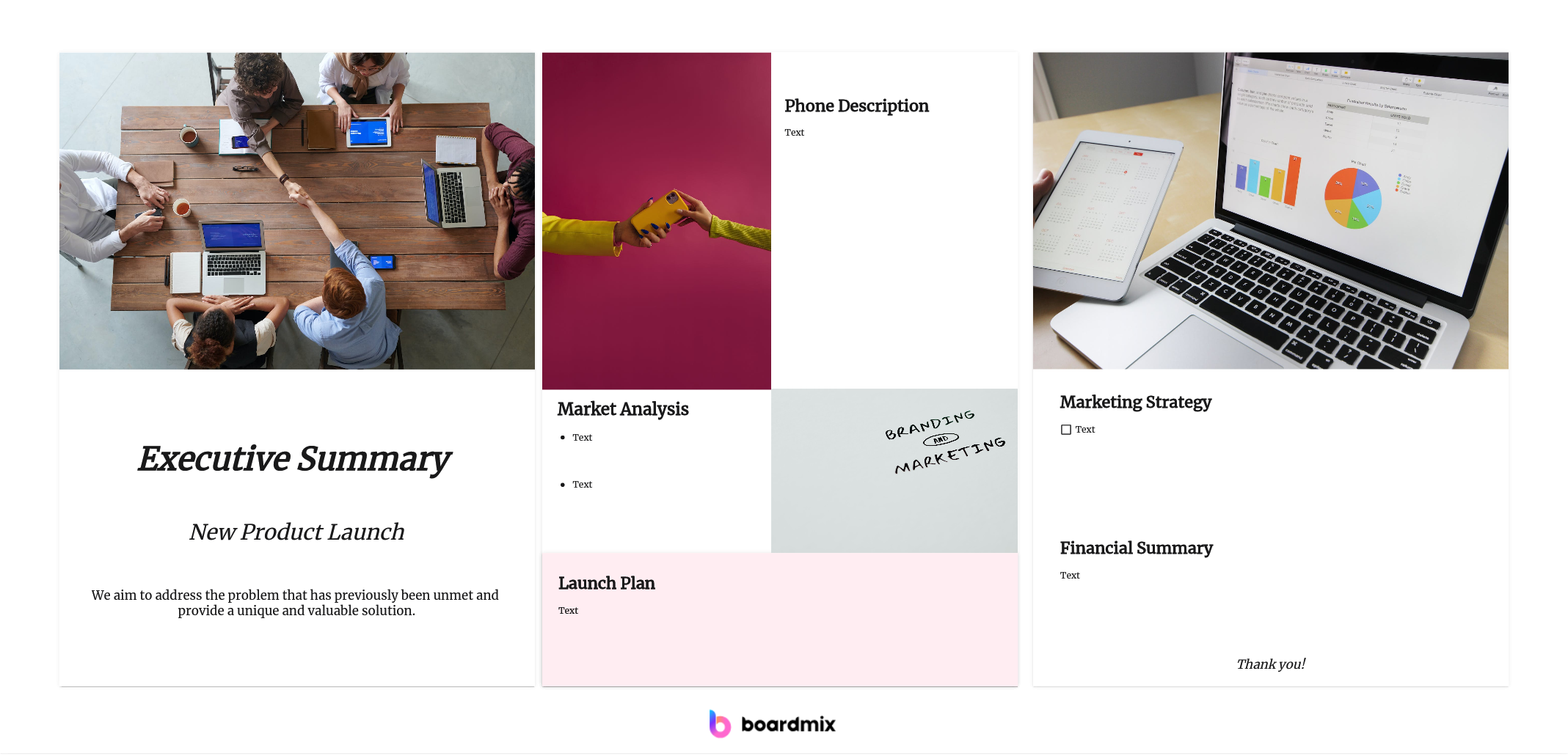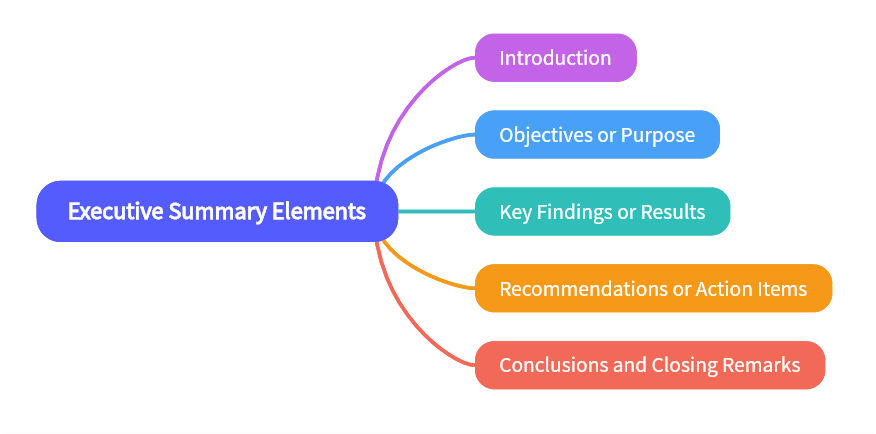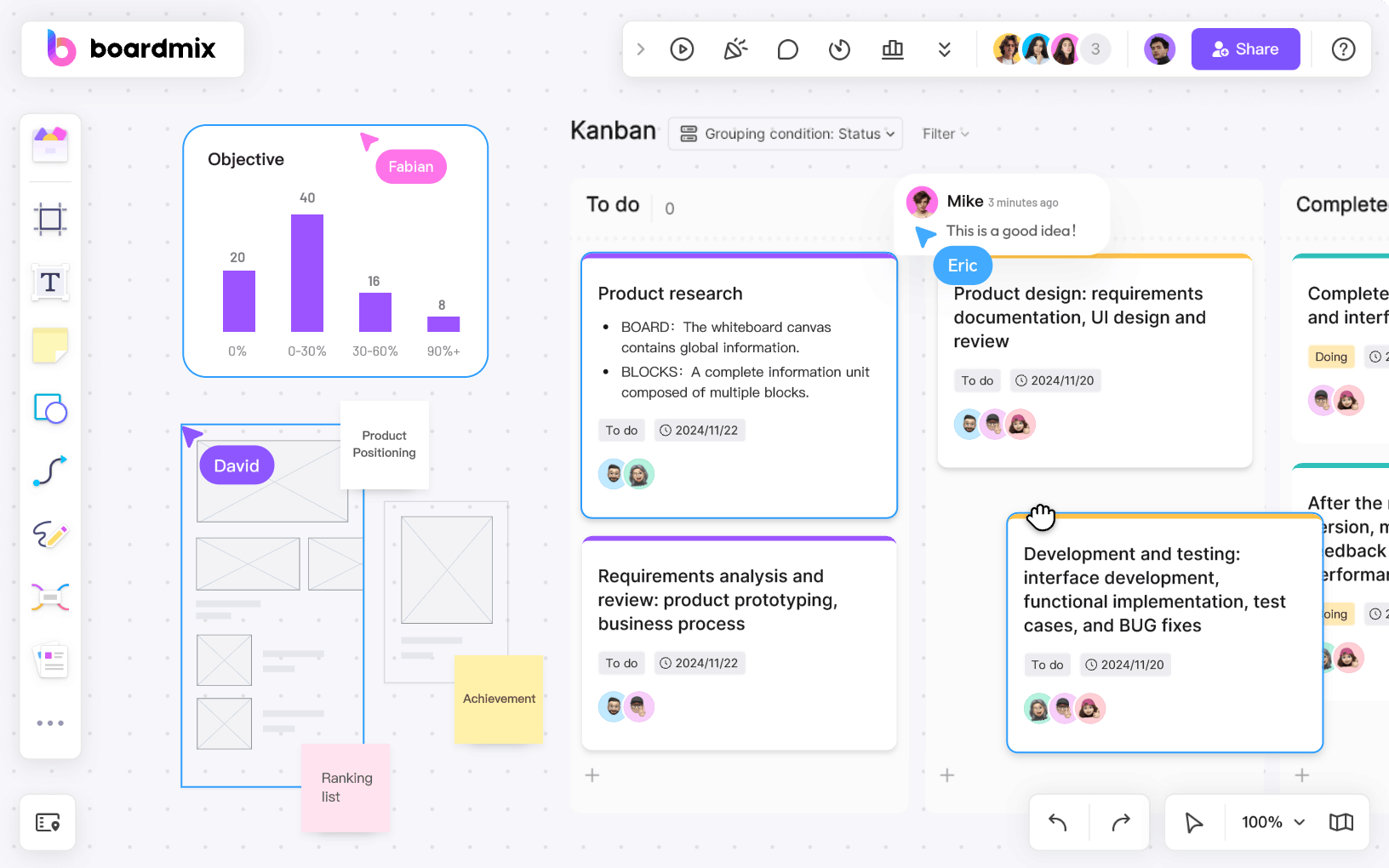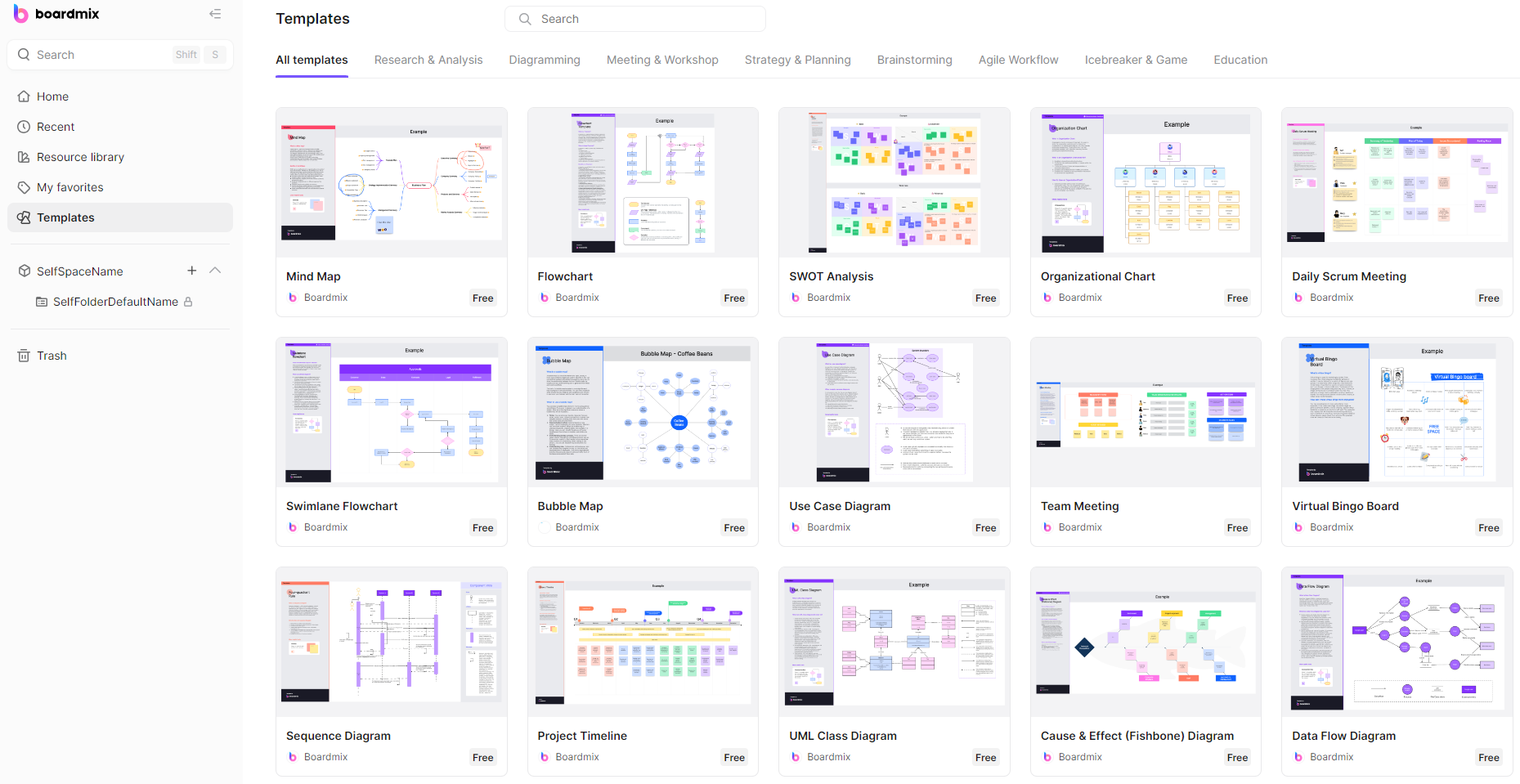In today's fast-paced business environment, executives and decision-makers are constantly inundated with information. As a result, the ability to convey key messages concisely and persuasively is crucial. This is where the executive summary comes into play. An executive summary is a brief but comprehensive overview of a business document, report, or proposal. Its primary purpose is to provide busy executives with a snapshot of the main points, enabling them to make informed decisions quickly. In this article, we will delve into the importance of executive summaries and explore how to create an executive summary that captivates and convinces.
Part 1. What is Executive Summary?
An executive summary is a concise and comprehensive overview of a document, report, or business plan. It is typically presented at the beginning of the document and is designed to provide busy executives, decision-makers, or stakeholders with a quick understanding of the main points and key information without having to read the entire document.

The purpose of an executive summary is to highlight the essential aspects of the document, such as the main objectives, findings, recommendations, and key insights. It serves as a snapshot of the content, allowing busy individuals to grasp the main ideas and make informed decisions without delving into the details.
In a business context, an executive summary often includes information about the company's mission, goals, financial performance, market position, and any other critical factors relevant to the document's purpose. It should be well-written, concise, and compelling to engage the reader and encourage further exploration of the complete document if necessary.
Part 2. What Is the Significance of an Executive Summary?
The executive summary plays a crucial role in communication and decision-making within a business or organizational context. Here are some key significances of an executive summary:
Time Efficiency: Executives and decision-makers often have limited time to review lengthy documents. An executive summary allows them to quickly grasp the key points and make informed decisions without investing substantial time in reading the entire document.
Decision-Making Support: The summary provides a concise overview of the document's main findings, recommendations, or proposals. This facilitates better decision-making by offering crucial information in a condensed form.
Communication: It serves as a communication tool that bridges the gap between technical details and the need for high-level understanding. Executives, stakeholders, and other readers can easily comprehend the core aspects without getting bogged down by excessive details.
Persuasion: An effectively crafted executive summary can be persuasive, capturing the reader's attention and encouraging them to delve deeper into the document. It serves as a teaser that generates interest in the content.
Clarity and Focus: By distilling the main points, the executive summary helps maintain clarity and focus on the document's objectives. It ensures that the most critical information is highlighted and easily accessible.
Business Proposals and Funding Requests: In business proposals or funding requests, the executive summary is often the first section that investors or potential partners read. It plays a crucial role in making a positive first impression and convincing them to explore the proposal further.
In summary, the executive summary is a valuable tool for effective communication, decision-making, and capturing the attention of busy professionals. Its significance lies in distilling complex information into a concise format that serves the needs of executives and other stakeholders.
Part 3. What Is Included in an Executive Summary?
While the specific structure of an executive summary can vary based on the type of document or report, a typical executive summary often includes the following five key parts:

Introduction:
Briefly introduce the document, its purpose, and the context.
Provide a concise overview of the main subject matter and its significance.
Objectives or Purpose:
Clearly state the main objectives or purpose of the document.
Outline what the document aims to achieve or communicate.
Key Findings or Results:
Summarize the main findings, results, or outcomes presented in the document.
Highlight the most critical data or insights that the reader needs to know.
Recommendations or Action Items:
If applicable, outline any recommendations or proposed actions based on the findings.
Clearly state what actions should be taken or decisions made as a result of the document.
Conclusions and Closing Remarks:
Summarize the main conclusions drawn from the information presented.
Provide any final insights or remarks that reinforce the importance of the document's content.
It's important to note that the structure may vary depending on the specific requirements of the document and the preferences of the organization or individuals creating it. However, these five components are commonly found in executive summaries across various contexts, such as business plans, research reports, project proposals, and more. The goal is to provide a concise yet comprehensive overview that captures the reader's attention and conveys the essential information.
Part 4. Executive Summary Template
Boardmix is an innovative online whiteboard solution designed to revolutionize the way teams collaborate and visualize their ideas. With a rich array of drawing templates, Boardmix makes it easy to create, share, and discuss visual content in real-time, fostering creativity and productivity. Whether you're brainstorming new ideas, planning projects, or conducting remote meetings, Boardmix can help streamline your processes. When it comes to writing an executive summary, Boardmix serves as a powerful tool for visually organizing thoughts and key points. You can use our intuitive interface to draw flowcharts or diagrams that outline your executive summary structure, making it easier for you to write a concise yet comprehensive report.

Key Features of Boardmix Executive Summary Template:
- Real-Time Collaboration: Boardmix allows multiple users to work on the same whiteboard simultaneously, enabling real-time collaboration and idea sharing.
- Variety of Drawing Templates: With a wide range of pre-designed templates, Boardmix makes it easy to create diagrams, flowcharts, mind maps and more.

- Intuitive Interface: The user-friendly interface of Boardmix ensures that anyone can start using it with minimal learning curve, making brainstorming sessions more efficient.

- Remote Accessibility: As an online tool, Boardmix can be accessed from anywhere at any time, providing flexibility for remote teams or individuals.
- Secure Sharing: You can easily share your whiteboards with others while maintaining control over who can view or edit them.

- High-Quality Visuals: Boardmix supports high-resolution visuals ensuring your ideas are presented clearly and professionally.
Part 5. Key Elements of an Effective Executive Summary
Clarity and Conciseness:
Succinctness is key when crafting an executive summary. Eliminate unnecessary details and jargon, focusing on conveying the core message. Use clear and straightforward language to enhance understanding.
Comprehensive Overview:
While brevity is essential, an executive summary should still provide a comprehensive overview of the document it summarizes. Include key findings, recommendations, and any critical data that supports the main argument.
Tailored to the Audience:
Recognize that different audiences may have varying levels of familiarity with the subject matter. Tailor your executive summary to meet the specific needs and interests of the intended audience, ensuring relevance and engagement.
Engaging Opening:
Capture the attention of the reader from the beginning. Craft an engaging opening that highlights the significance of the document and entices the reader to continue.
FAQs about Executive Summary
1. What is a strong executive summary?
A strong executive summary is a concise overview that effectively captures the essence of a business proposal or report. It succinctly outlines the key objectives, strategies, and potential outcomes. It should highlight the unique selling points, market opportunities, and competitive advantages, providing a clear understanding of the document's core content. A compelling executive summary grabs the reader's attention, communicates the business's value proposition, and motivates further exploration. It often includes essential financial and performance metrics while maintaining brevity and clarity, enabling busy decision-makers to quickly grasp the key information and make informed judgments.
2. What should be avoided in an executive summary?
In an executive summary, avoid excessive jargon or technical language that may confuse readers. Steer clear of lengthy details and unnecessary background information, maintaining a focus on key insights. Resist the temptation to embellish or exaggerate; provide accurate and realistic information. Avoid ambiguous statements, ensuring clarity and precision in conveying your message. Refrain from introducing new ideas or information not covered in the main document. Lastly, don't overlook proofreading for errors or inconsistencies. An effective executive summary should be concise, clear, and aligned with the document's main content, allowing decision-makers to quickly grasp essential information without unnecessary distractions.
3. What are the 4 aspects of executive summary?
Overview of the Business Proposal:
Provide a brief introduction to the purpose and context of the document. Clearly state the nature of the proposal, whether it's a business plan, project report, or any other document, and briefly describe the key objectives.
Key Insights and Findings:
Summarize the most critical findings, data, or insights presented in the main document. Highlight key metrics, achievements, and outcomes. This section should offer a snapshot of the information that decision-makers need to know without delving into excessive detail.
Value Proposition and Differentiators:
Clearly articulate the unique value proposition of the proposal. Highlight what sets the business, project, or idea apart from others. Identify competitive advantages and key factors that contribute to success. This helps the reader understand the project's significance and potential.
Call to Action or Recommendations:
Conclude the executive summary with a clear call to action or specific recommendations. If applicable, suggest next steps, investment considerations, or strategic decisions. This section guides decision-makers on how to proceed after reviewing the document.
Remember, brevity and clarity are essential in each aspect of the executive summary, making it a powerful tool for busy executives and stakeholders.
4. What are four mistakes people often make when creating executive summaries?
Common mistakes in executive summaries include excessive detail, leading to information overload; a lack of clarity with complex language or jargon; omission of crucial information, leaving decision-makers uninformed; and inconsistency with the main document, causing confusion and mistrust. A concise and clear executive summary should highlight key insights, avoid unnecessary details, use accessible language, ensure alignment with the main document, and provide decision-makers with a quick and accurate overview. These principles enhance the summary's effectiveness, aiding busy professionals in making informed decisions based on essential information.
Conclusion
In conclusion, mastering the art of creating an effective executive summary is a valuable skill for professionals in any industry. By understanding the importance of clarity, conciseness, and audience adaptation, individuals can unlock the power of the executive summary to communicate their ideas persuasively. In a world where time is a precious commodity, the ability to convey crucial information efficiently can make the difference between success and missed opportunities.
Boardmix is an excellent tool for creating executive summaries, offering a visual platform that helps you organize and present your key points effectively. Its real-time collaboration feature allows teams to work together seamlessly, ensuring all perspectives are included in the summary. With its variety of drawing templates, Boardmix simplifies the process of outlining complex ideas, making it easier to write a concise yet comprehensive executive summary.








